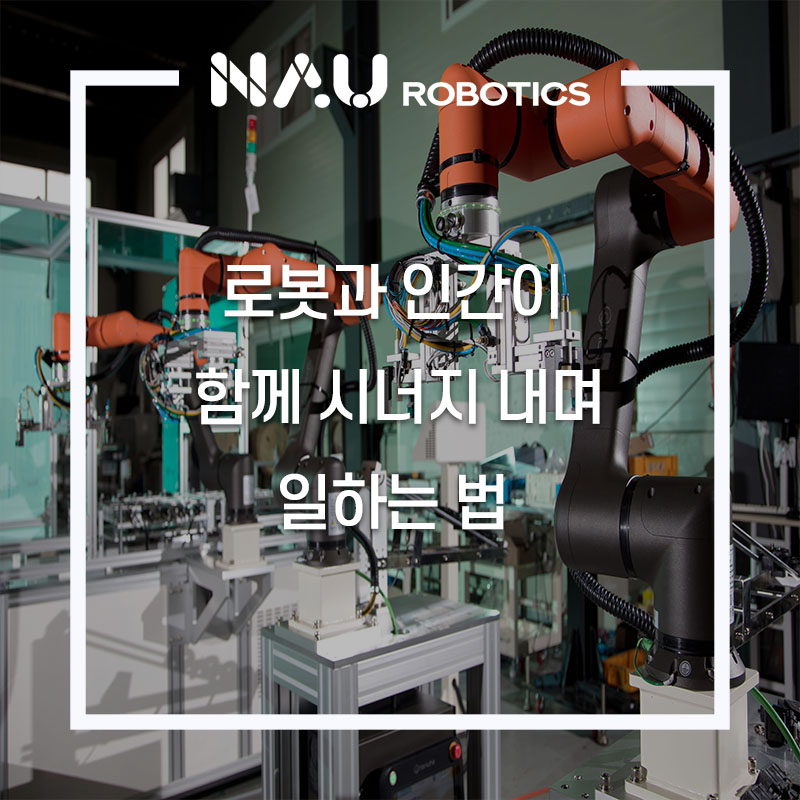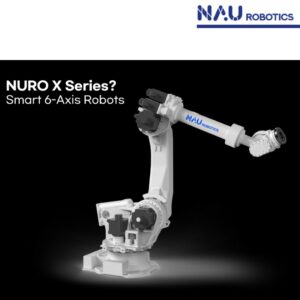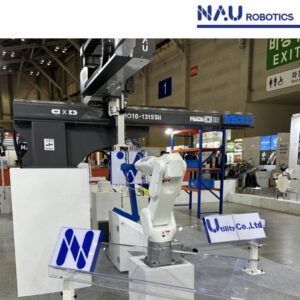안녕하세요. 나우로보틱스 블로그 지기, 나우지기 입니다! 로봇에 대한 도입과 확산사례가 갈수록 더욱 더 늘어나면서 로봇과 기존의 직원들이 조화롭게 일할수 있는 방법을 찾는 것도 굉장히 중요해져 가고 있습니다! 특히 중요해져 가고 있는데요, 오늘은 나우로보틱스에서 한 편의 외신기사를 통해 로봇과 인간이 함께 공존하면서 일할 수 있는 방법을 알아보고자 합니다! 지금부터 함께 보실까요?
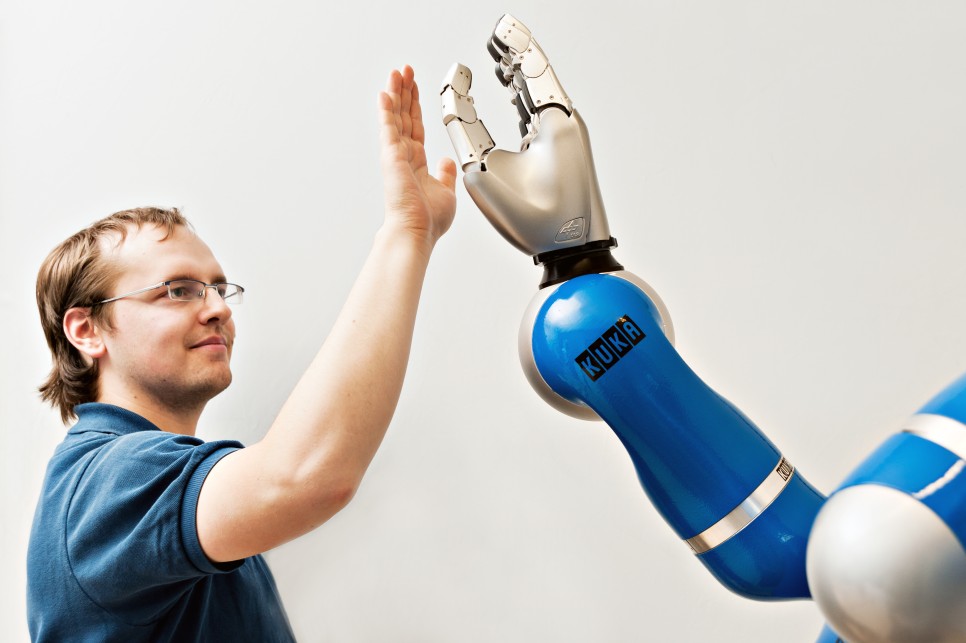
Working with robots with different levels of collaboration
Collaborative robots are changing the rapidly evolving workplace, improving safety and productivity. Robots offer many potential benefits for businesses in numerous industries. By working with robots, employees can gain valuable technical skills and perform their jobs more efficiently. There are varying levels of collaboration that businesses can implement and strategies they can use to make sure collaborative robots are safe.
(K) 협동로봇은 작업공간을 빠르게 변화시키면서 안전과 생산성도 함께 향상시킨다. 로봇은 수많은 사람들에게 잠재적인 이익을 가져다 준다. 로봇과 함께 일하면서 직원들은 가치있는 기술을 습득할 수 있고 그들의 일을 더 효율적으로 수행할 수 있다. 기업의 협업수준과 협동로봇이 안전한지를 확인하기 위해 사용할 수 있는 전략은 다양하다.
The Benefits of Working With Robots
로봇과 함께 일하면서 생기는 장점
Businesses have compelling reasons for investing in robots, particularly collaborative robots. In fact, the collaborative robotics market has a 35% anticipated CAGR through 2027. Supply chain frustrations and hiring challenges are only accelerating robotics adoption, particularly in manufacturing and warehousing.
(K) 기업들이 로봇, 특히 협동로봇에 투자하는데는 그럴만한 이유가 있다. 실제로 협동로봇 시장은 2027년까지 35% 가량의 CAGR를 나타낼 것으로 예상한다. 공급망과 고용문제는 특히 제조업, 물류창고 등에서 로봇을 도입하는 결정적인 계기가 됐다.
These industries are under a high amount of strain due to supply chain, demand, and staffing struggles and have many potential applications for robotics. For example, automated warehouses have gained a 60% increase in sales as a result of the higher productivity offered by robots.
(K) 이 업계는 산업은 공급망, 수요, 인력난 등으로 인한 부담이 큰 편이며 로봇을 도입 또는 응용할 수 있는 곳도 많다. 예를들어 자동창고는 로봇을 통해 더 높은 생산성을 얻어 60%의 매출 증가율을 보였다.
In any industry, robotics has the potential to increase productivity, efficiency, and product quality while reducing waste and expenses. In many industries, robots can take on jobs that present a high risk of employee injury. This reduces stress for employees and increases workplace safety. It is also likely to save employers money on insurance and medical expenses for any workplace accidents that would have otherwise occurred.
(K) 로봇은 어떤 산업에서든지 생산과 효율성, 제품 품질을 높이면서 불필요한 낭비와 비용을 줄일 수 있다. 또한 많은 산업군에서 직원들이 근무 도중 상해를 입을 수 있는 문제를 예방해주기도 한다. 이런 점은 직원들의 스트레스를 줄이고 작업장의 안전을 높여준다. 아울러 로봇을 도입하지 않았다면 발생했을지 모를 근무 도중 사고에 대한 보험료, 의료비 등을 절감하는 효과도 있다.
Robots alone are often confined to simple tasks that can be pre-programmed in. With the help of AI and IoT, however, robots are capable of a vast array of workplace tasks. A robot could automate quality control using IoT and computer vision, for example.
(K) 로봇은 종종 프로그래밍이 가능한 간단한 작업에 한정된다. 그러나 AI와 IOT의 도움으로 로봇은 광범위한 작업 공간을 처리할 수 있다. 예를들어 로봇은 IOT와 컴퓨터 비전을 사용해 품질 관리를 자동화할 수 있다.
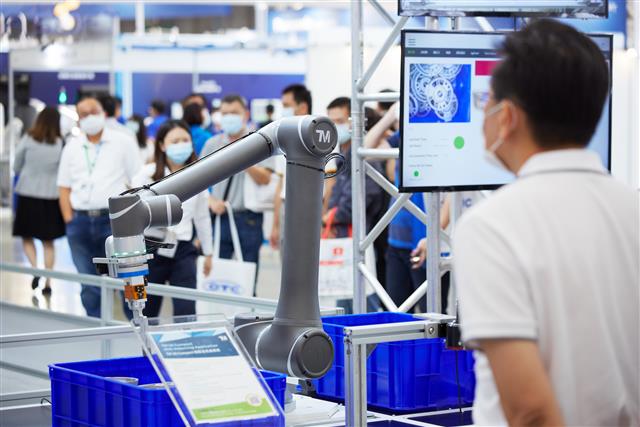
Balancing Robots and People
로봇과 사람의 조화
The benefits of working with robots are not without their potential drawbacks. Any discussion about robots in the workplace needs to include the possible impact on employment. The level of collaboration a business allows between employees and robots is also a crucial consideration and affects safety as well as employment.
(K) 로봇과 함께 일하는 것으로 잠재적인 단점을 모두 없앨 수 있는 것은 아니다. 직장에서 로봇을 도입하는 것은 고용에 영향을 줄 수 있다는 것을 고려해야 한다. 기업이 직원과 로봇이 협업하는 것을 어느정도 허용할지 고려해야하는 것도 중요한 사항이며 안전에도 영향을 줄 수 있다.
There are generally two narratives going on concerning working with robots. Some argue that robots improve workplace safety and increase productivity and efficiency. Others argue that robots are displacing and negatively impacting employees, particularly those without a college degree.
(K) 일반적으로 로봇에 대해서는 두 가지 이야기가 있다. 어떤 사람들은 로봇이 작업장의 안전은 물론 생산과 효율성을 증가시킨다고 말한다. 반면 다른 사람들은 로봇이 직원, 특히 대학 학위가 없는 사람들을 대체해 부정적인 영향을 미친다.
For example, the automotive industry is estimated to employ 38% of robots in the U.S. A study by the MIT Sloan School found that these robots are negatively impacting employees, specifically by replacing jobs in the automotive industry and others.
(K) 예를들어 자동차 산업은 미국에서 로봇의 38% 가량의 비중을 차지하고 있는 것으로 추정되는데 MIT Sloan 연구에 따르면 이런 로봇은 자동차 산업에서 사람들의 일자리를 대체해 직원들에게 부정적인 영향을 준다는 것으로 발견한다.
This idea that robots are stealing jobs has come into question over the last couple of years as labor shortages have grown. The National Association of Manufacturers estimates that over 2 million manufacturing jobs will go unfilled by 2030. Manufacturing companies are among the largest adopters of robotics, as mentioned above with the automotive industry.
(K) 로봇이 일자리를 감소시키고 있다는 견해는 지난 몇 년 동안 노동력 부족 문제가 증가함에 따라 제기됐다. 미국 제조업 협회는 2030년까지 2백만개 이상의 제조업 일자리가 채워지지 않을 것으로 추산된다. 제조기업들은 자동차 산업과 함께 언급한 것처럼 로봇을 가장 많이 도입한 곳 중 하나다.
So, if robots truly are replacing jobs in manufacturing, there is little threat of employees suffering as a result. In fact, working with robots is much more likely to improve employees’ experience by reducing strain on understaffed teams. Some robotic equipment can coexist in an area near where people work. Other instances in the factory may require more collaborative efforts between people and machines.
(K) 그러모로 로봇이 정말 사람의 일자리를 대체하고 있다면, 결과적으로 근로자들이 고통 받을 일은 거의 없다. 사실, 로봇과 함께 일하는 것은 인력이 부족한 팀에게 부담은 줄여주고 직원들의 경험을 향상시킬 가능성이 훨씬 더 높다. 몇몇 로봇 장비들은 사람들이 일하는 근처 지역에 공존할 수 있다. 공장의 다른 사례에서는 사람과 기계 간의 협업노력이 더 필요할 수 있다.
There is a happy medium that businesses can find implementing robots. Collaborative robots are able to deliver the benefits of automation while still utilizing employees’ valuable skills. Collaborative robots augment the strengths of employees rather than attempting to fully replace them.
(K) 기업이 로봇을 도입할 방법을 찾는데 도움을 주는 좋은 매체가 있다. 협동로봇은 직원의 소중한 기술을 활용해 자동화의 이점을 제공할 수 있다. 협동로봇은 직원을 완전히 대체하려고 시도하기 보다는 직원의 장점을 강화한다.
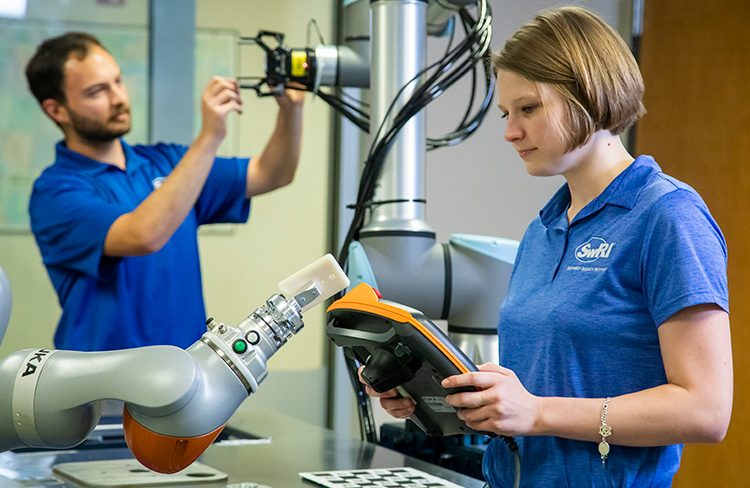
Are Side-by-Side Collaborative Robots Safe?
Workplace robot integration is a spectrum. A business could confine robots to a closed-off space isolated from any employee contact. On the other hand, they could have people working side-by-side with a fleet of robots independently traversing a workplace floor. The degree to which a business has its employees collaborate with robots depends on the application as well as workplace safety.
(K) 작업공간에서 로봇을 통합하는 스펙트럼이다. 기업은 로봇을 직원들의 접촉으로부터 격리된 폐쇄된 공간에 국한시킬 수 있다. 반면에 사람들이 독립적으로 작업장을 가로지르는 로봇과 함께 나란히 일하도록 하기도 한다. 기업이 직원들이 로봇과 협업하는 정도는 작업장의 안전 뿐만 아니라 애플리케이션에도 달려있다.
The reality is that robots can be dangerous pieces of equipment if operated or handled incorrectly. While robots can improve safety in some regards, for example by eliminating strain caused by repetitive movement, they can still cause harm. Most of the time, though, this is the result of improper use. Therefore, it’s crucial to train workers about the specific hazards of each robotic equipment. Initial training and retrainings will ensure that employees understand the risk and how to work safely around these machines.
(K) 현실에서 로봇은 잘못 작동하거나 다룰 경우 위험한 장비가 될수도 있다. 로봇이 예를 들어 반복적인 움직임으로 일부 측면에서 안전성을 향상시킬 수 있지만, 여전히 문제 해를 끼칠 수도 있다. 그러나 대부분의 경우 이는 부적절하게 사용해서 발생한 것이다. 따라서 각 로봇 장비의 특정 위험에 대해 근로자들을 훈련시키는 것이 중요하다. 초기 교육 및 재교육을 통해 직원들이 안전하게 작업하는 방법과 위험이 될 수 있는 요소들을 확실하게 이해하고 인지할 수 있도록 한다.
Many collaborative robots are built with thorough safety features designed with human co-workers in mind. New technologies are also helping to improve robot safety, as well. For example, AI and IoT sensors can help robots better identify humans around them, allowing them to stop moving if anyone comes within a certain radius.
(K) 많은 협동로봇은 사람들을 고려하여 설계됐으며 철저하게 안전기능을 갖췄다. 새로운 기술들은 로봇의 안전성을 향상시키는데 도움을 준다. 예를들어 AI와 IOT 센서는 로봇이 주변 사람들을 더 잘 식별할 수 있도록 도와줄 수 있어 누군가가 특정 반경내 들어오면 로봇이 멈추기도 한다.
Normal employees who work with collaborative robots have repeatedly mentioned how helpful they are. It appears working with robots truly can be safe and beneficial for employees, as long as businesses take the necessary safety precautions.
(K) 협동로봇과 함께 근무하는 사람들은 로봇이 얼마나 도움이 되는지를 반복해서 말한다. 기업들이 필요한 안전조치를 취하는 한 로봇과 함꼐 일하는 것이 직원들에게 정말 안전하고 유익할 것이다.
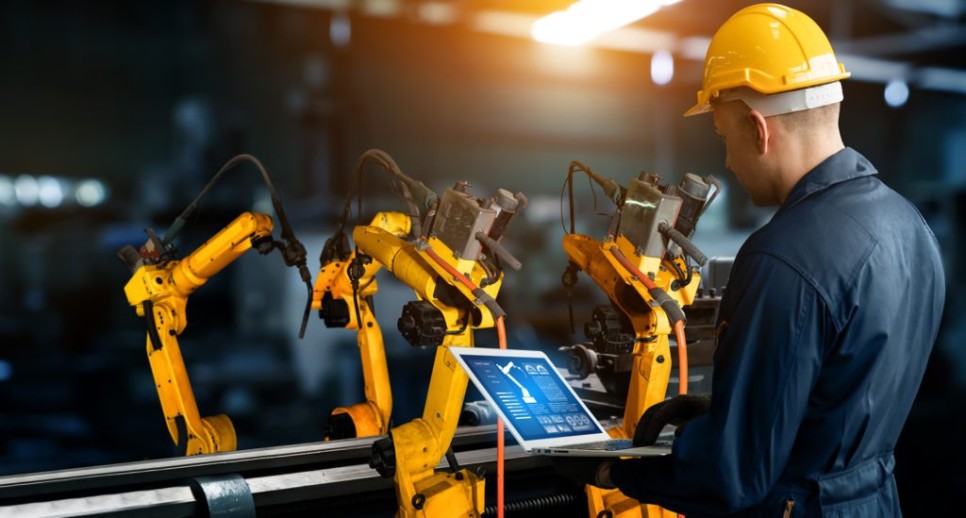
Working With Robots Strategically
로봇과 함께 전략적으로 일하는법
Ultimately, businesses need to consider what goals are most important to them in order to pinpoint the level of robotic collaboration they want. A company that needs to boost productivity at any cost may need to shift to wide-scale automation, which would include limited collaboration and a primarily robotic workforce.
(K) 궁극적으로 기업이 원하는 협동로봇의 수준을 파악하기 위해서는 어떤 목표가 가장 중요한지를 먼저 파악해야 한다. 어떤 일이 있어도 생산성을 높여야 하는 기업은 협업이 제한되고 주로 로봇 인력이 투입되는 대규모 자동화로 전화해야 할 수도 있다.
In contrast, a business that wants to address staffing shortages may want to encourage collaboration with robots, using them to boost the skills and capabilities of existing employees.
(K) 이와는 대조적으로 인력 부족 문제를 해결하고자 하는 기업은 기존 직원들의 기술과 능력을 향상시키기 위해 로봇과 협력을 적극적으로 추진하기도 한다.
The right level of collaboration also depends on the industry in question. Some industries lend themselves more naturally to certain types of robots than others. Warehousing, for example, has many easy opportunities for collaborative robot integration. A robot can be used to move heavy pallets or transport items around a sprawling warehouse, saving employees time so they can focus on more complex logistics tasks.
(K) 적절한 협동로봇 수준도 해당 산업에 따라 달라진다. 어떤 산업은 다른 산업보다 특정 유형의 로봇에 더욱 자연스럽게 대체되기도 한다. 예를들어 창고의 경우 협동로봇을 통합적으로 사용할 쉬운 기회가 더욱 많다. 로봇이 무거운 파렛트를 옮기거나 널찍한 창고 주변에서 물건을 옮기는데 사용될 수 있어 직원들이 복잡한 물류 업무에 집중할 수 있도록 시간을 절약해준다.
In any industry, however, it is important to keep employees in mind. No matter the level of collaboration with robots, employees should receive thorough robotics safety training. Businesses should also remember to keep the workplace culture grounded. Robots may deliver an increase in productivity, but this can also leave employees feeling stressed as they try to compete with their robot counterparts.
(K) 그러나 어떤 업종이든 항상 사람을 고려해두는 것이 중요하다. 로봇과 협업 수준에 상관없이 직원들은 철저하게 안전 교육을 받아야 한다. 또한 기업은 직장 문화를 바탕 위해 두는 것을 기억해야 한다. 로봇은 생산성 증가를 가져올 수 있지만 또한 직원들과 경쟁이 될 수 있기에 스트레스 요인으로 작용할 수도 있다.

The Industry 4.0 Workplace
4차산업 시대에 직장
As Industry 4.0 drives a widespread technological transformation in the workplace, collaborative robots are becoming a central part of the workforce. These robots have the potential to deliver invaluable benefits for businesses, employees, and customers. However, businesses need to be strategic and considerate about how they integrate robots and the degree to which employees collaborate with them. Working with robots successfully requires a commitment to safety and a balance between robot and human skills.
(K) 4차산업이 직장 내에 광범위한 기술 혁신을 불러오면서 협동로봇은 노동력에서 주축이 되고 있따. 이러한 로봇은 기업, 직원, 고객에게 매우 귀중한 혜택을 제공할 수 있는 잠재력이 되기도 한다. 그러나 기업은 로봇을 통합하는 방법과 직원들이 로봇과 협업하는 정도에 대해 전략적으로 고려해야할 필요가 있다. 로봇을 성공적으로 도입하려면 안전에 대한 우선과 로봇과 인간의 기술 사이의 조화가 필수적이다.

